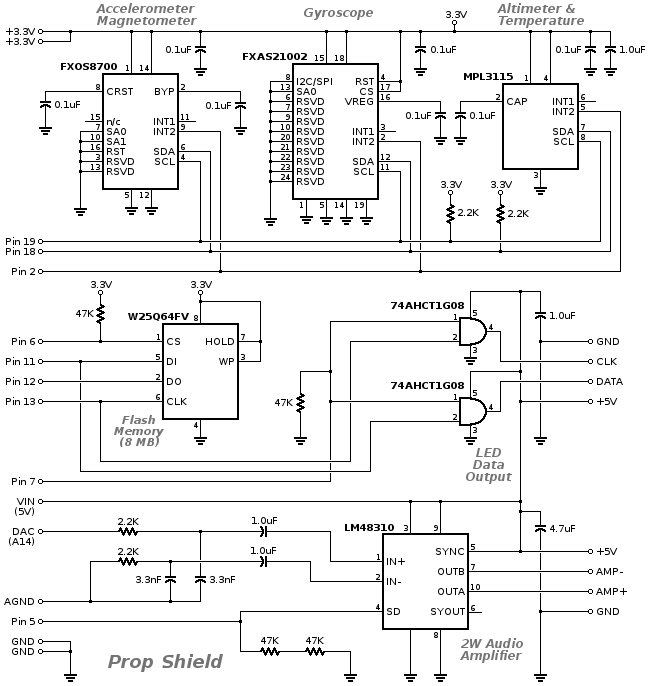I recently picked up an ESP32 feather (https://learn.adafruit.com/adafruit-huzzah32-esp32-feather/pinouts), and want to try hooking it up to a Prop Shield via a feather wing adapter (https://www.adafruit.com/product/3200). I had a few questions on the wiring though. For reference, this is the schematic for the adapter:
https://raw.githubusercontent.com/a...-3.x-Feather-Adapter-PCB/master/schematic.png
I had a few questions specifically:
1) AGND doesn't appear to go anywhere. Is it necessary for me to bring it out to anything on the ESP32?
2) What exactly is AREF? The ESP32 marks the pin that connects to as NC.
3) I believe I need to connect Pin 7 (LED_EN) and Pin 2 (IRQ) on the prop shield to some pin on the feather. Is there anything I should pay particular attention to when selecting this pin? All of the pins on the ESP32 connect to something on the Prop shield, so I didn't want to cause any problems by doing that.
For #3, I'm thinking of
1) Jumping Pin 20 (A6) with Pin 7 (LED_EN), so that I can use A5 to enable the LEDs.
2) Jumping Pin 14 (A0) with Pin 2 (IRQ), so that I can get motion sensor interrupts.
I did pick up a Teensy 3.2 as well, so I can always fall back to that. I was hoping to avoid having an external BLE device, so I figured I'd try the ESP32 first.
Any thoughts on whether that would make sense, and whether there is anything I need to do about AGND would be greatly appreciated!
https://raw.githubusercontent.com/a...-3.x-Feather-Adapter-PCB/master/schematic.png
I had a few questions specifically:
1) AGND doesn't appear to go anywhere. Is it necessary for me to bring it out to anything on the ESP32?
2) What exactly is AREF? The ESP32 marks the pin that connects to as NC.
3) I believe I need to connect Pin 7 (LED_EN) and Pin 2 (IRQ) on the prop shield to some pin on the feather. Is there anything I should pay particular attention to when selecting this pin? All of the pins on the ESP32 connect to something on the Prop shield, so I didn't want to cause any problems by doing that.
For #3, I'm thinking of
1) Jumping Pin 20 (A6) with Pin 7 (LED_EN), so that I can use A5 to enable the LEDs.
2) Jumping Pin 14 (A0) with Pin 2 (IRQ), so that I can get motion sensor interrupts.
I did pick up a Teensy 3.2 as well, so I can always fall back to that. I was hoping to avoid having an external BLE device, so I figured I'd try the ESP32 first.
Any thoughts on whether that would make sense, and whether there is anything I need to do about AGND would be greatly appreciated!



